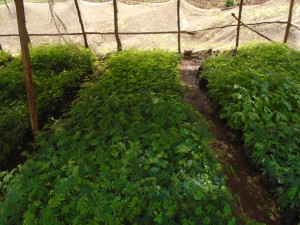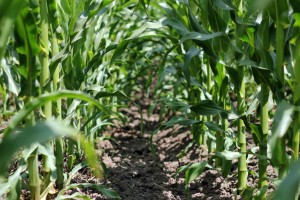 Food security is defined as a situation when all people, at all times, have physical, social and economic access to sufficient, safe, and nutritious food that meets their dietary needs and food preferences for an active and healthy life.
Food security is defined as a situation when all people, at all times, have physical, social and economic access to sufficient, safe, and nutritious food that meets their dietary needs and food preferences for an active and healthy life.
However, producing more food for a growing population in the coming decades, while at the same time combating poverty and hunger, is a huge challenge facing African agriculture. The risks that come with climate change make this task more daunting. However, hundreds of thousands of rainfed smallholder farmers in Zambia, Malawi, Niger, and Burkina Faso have been shifting to farming systems that are restoring exhausted soils and are increasing food crop yields, household food security and incomes. Organic inputs from legumes play an important role in raising crop productivity without relying fully on expensive mineral fertilizers. There is greater direct production of food when crops are planted under the canopy or in association with fertilizer trees such as Faidherbia Albida.
 This farming approach has predominantly been identified with smallholder farmers in Zambia, Malawi, Niger, Burkina Faso and Mali among others who have been able to increase their yields by applying the principle of evergreen agriculture as indicated here below:
This farming approach has predominantly been identified with smallholder farmers in Zambia, Malawi, Niger, Burkina Faso and Mali among others who have been able to increase their yields by applying the principle of evergreen agriculture as indicated here below:
- Malawi: Maize yields increased up in the range of 26% to 400% when grown under the canopy of Faidherbia albida (Akinnifesi et al, 2009; Saka et al, 1994).
- Zambia: In 2008 maize yield in the vicinity of Faidherbia albida trees averaged 4.1t/ha compared to 1.3t/ha beyond the canopy of F. albida (Garrity et al, 2010)
- Mali: Native species of trees and shrubs such as Vitellaria paradoxa, Tamarindus indica and Adansonia digitata contribute to farmer’s livelihoods by supplying food throughout the year thus protecting them from hunger during hunger period in rainy season (Faye et al, 2010)
- Niger: FMNR has transformed agriculture with parkland tree species such as Faidherbia albida, Pliostigma reticulatum and Combretum spp. resulted in an average estimate of at least 500,000 additional tonnes of food produced per year (Reij et al, 2009)
- Burkina Faso: Cereal production under canopy of fertilizer trees increased by an average of at least 400kg/ha which was an increase of 40% to more than 100% and further translate to annual increase of 80,000t of grain enough to feed 50,000 people (Garrity et al, 2010; Reij et al, 2009)
Related Resources
Projects
http://worldagroforestry.org/evergreen_agriculture
Extension Materials
http://www.worldagroforestry.org/downloads/publications/PDFs/MN17070.PDF
http://www.worldagroforestry.org/downloads/publications/PDFs/B16723.PDF
Publications
http://cdkn.org/wp-content/uploads/2011/12/Zambia-InsideStory_final_hi-res1.pdf
http://aciar.gov.au/files/node/13987/keynote_4_18034.pdf
News/Blogs
http://treesonfarms.com/agroforestry/biodiversity-and-agroforestry

